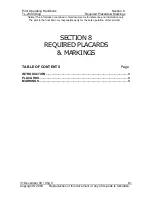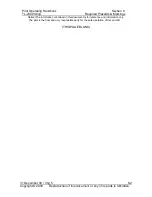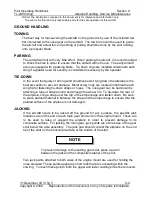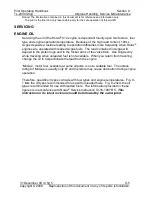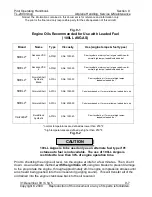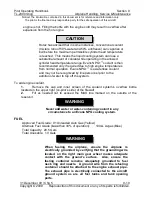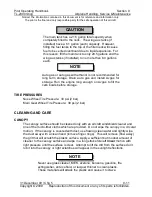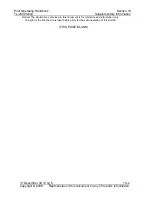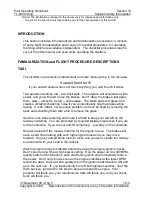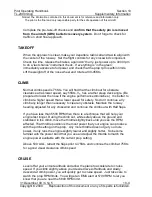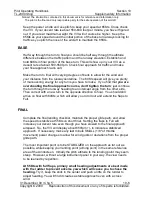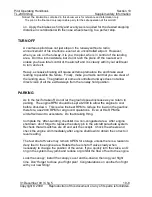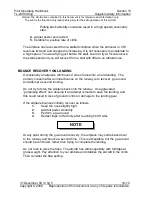
Pilot Operating Handbook
Section 9
TL-2000
Sting
Airplane Handling, Service & Maintenance
Notice! The information contained in this document is for reference and information only.
The pilot is the final and only responsible party for the safe operation of this aircraft.
31 December 09 / Chg 5
9-8
Copyright © 2009 Reproduction of this document or any of its parts is forbidden.
Before hand-turning the propeller, ENSURE THAT
BOTH IGNITION SWITCHES ARE OFF. For safety
purposes, always treat a propeller as though the
engine could start at any time while cranking. The
engine is not designed to be hand ‘propped’.
Never turn the engine backwards (clockwise when
viewed from the front to the rear of the aircraft)
permanent damage to the engine may result due to
loss of oil pressure to critical components.
Open the access panel on the upper cowling. To check the oil, unscrew the cap of the
oil reservoir located at the rear of the firewall. Remove the dipstick to check the oil
level. A flattened segment at the end of the dipstick represents the oil capacity range.
The top of this segment is the MAX limit and the bottom of the segment is the MIN
limit. Ensure the oil level is between these limits, but it must
never
fall below the MIN
limit. The difference between MIN and MAX is 0.8 Qts.
To best protect your engine, change the engine oil and replace the oil filter every 25
hours of engine operating time or after cross-country operation with 100LL Avgas. To
properly change the oil and replace expended components, proceed as follows:
In order to keep all foreign deposits in suspension, only
drain the oil after the engine has been warmed. During
each oil change take a sample of the oil from mid-stream
to send for oil analysis.
1.
Remove the upper engine cowling.
2.
Remove oil filler cap and dipstick from the oil reservoir.
3.
Remove lid of oil reservoir by unfastening the clamp-down ring.
4.
Remove inner screen and baffle insert from oil reservoir. Do not damage the
large “O” ring.
WARNING
WARNING
NOTE


